
Key Points
- Growth Sectors Remain Under Pressure on an Absolute Basis
- Technology Tests a Key Support Level
- Communication Services Breaks Important Support
- Sellers Find the Energy and Materials Sectors
- Defensive Groups Are Relative Leaders
Visiting the Sector Relatives
Information Technology
Last week we noted that the 2,500 was in play for the Technology sector, and that level was reached yesterday before the bulls stepped in to defend. The index remains below the 50 and 200-day moving averages, keeping the bears in control of the trend for now.
Relative to the S&P 500
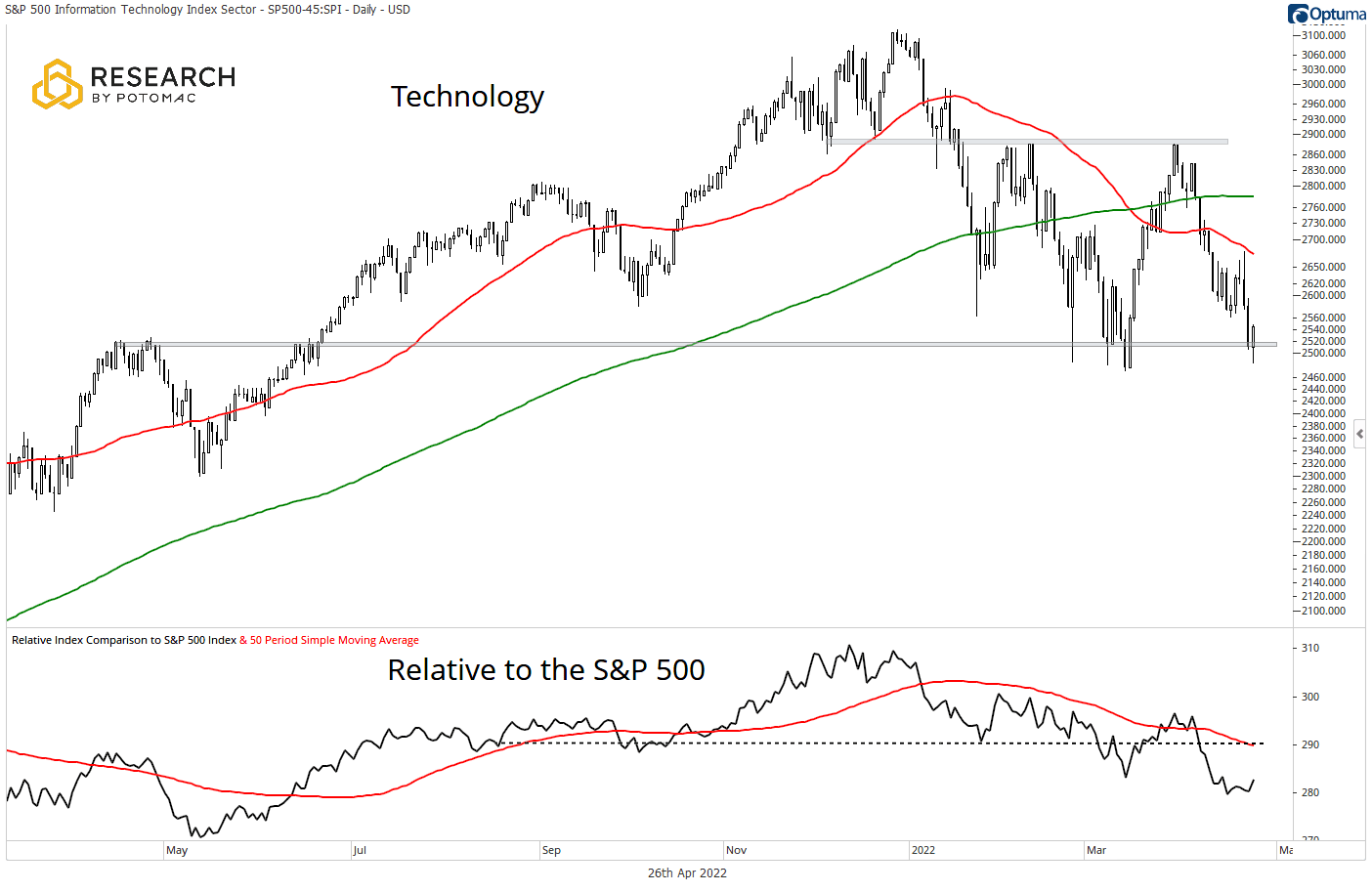
Consumer Discretionary
The Consumer Discretionary sector remains in the hands of the bears, with the index below the 50 and 200-day moving averages. The March lows are still in play and are a key level for the bulls to defend should they be reached. Breaking 1,500 would put the trend in favor of the bulls.
Relative to the S&P 500
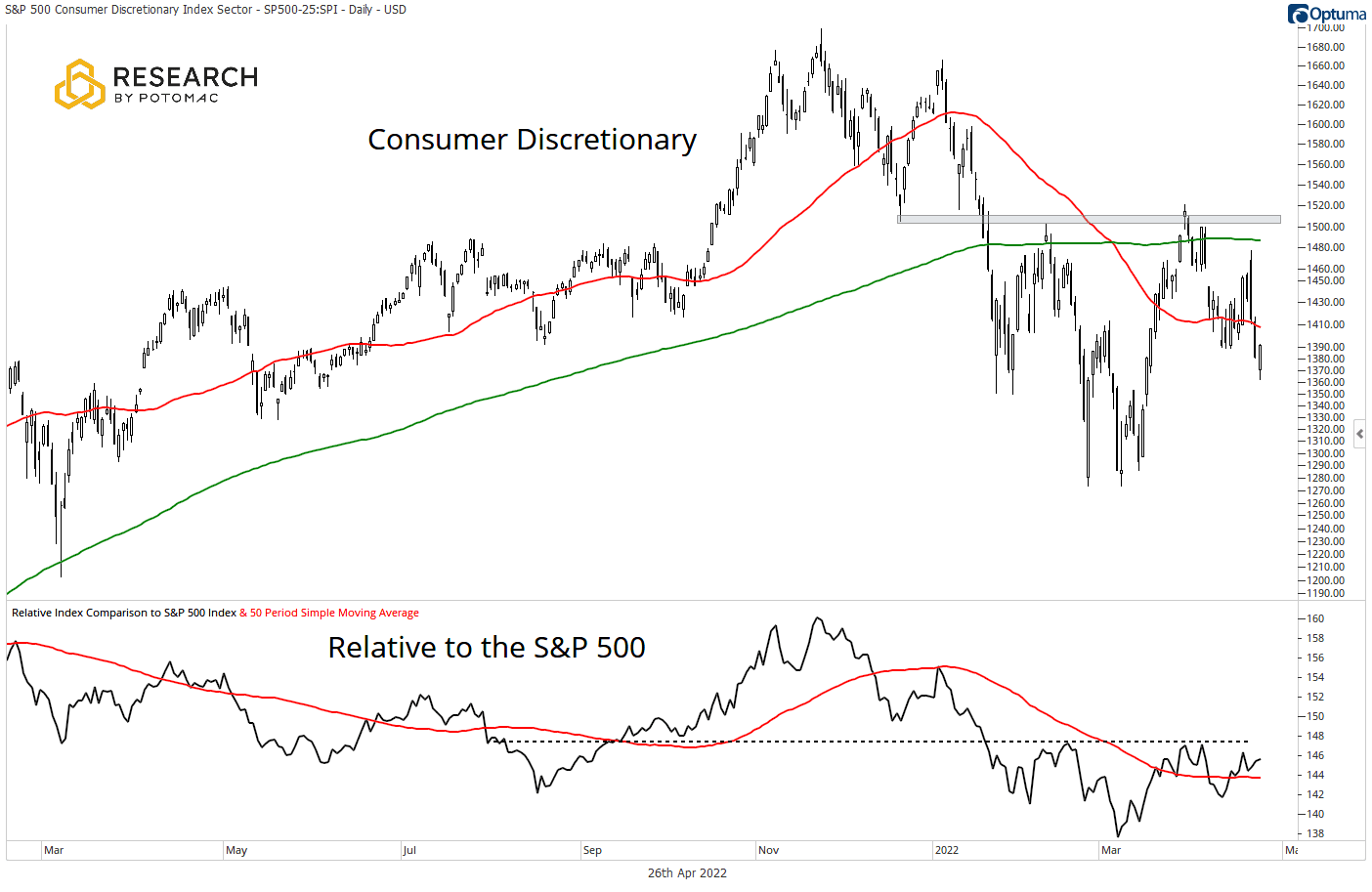
Communication Services
Communication Services has breached support at the 215 level as it extends below the declining 50 and 200-day moving averages. Below 215, they retain control, and the odds of a move down to 190 are increased.
Relative to the S&P 500
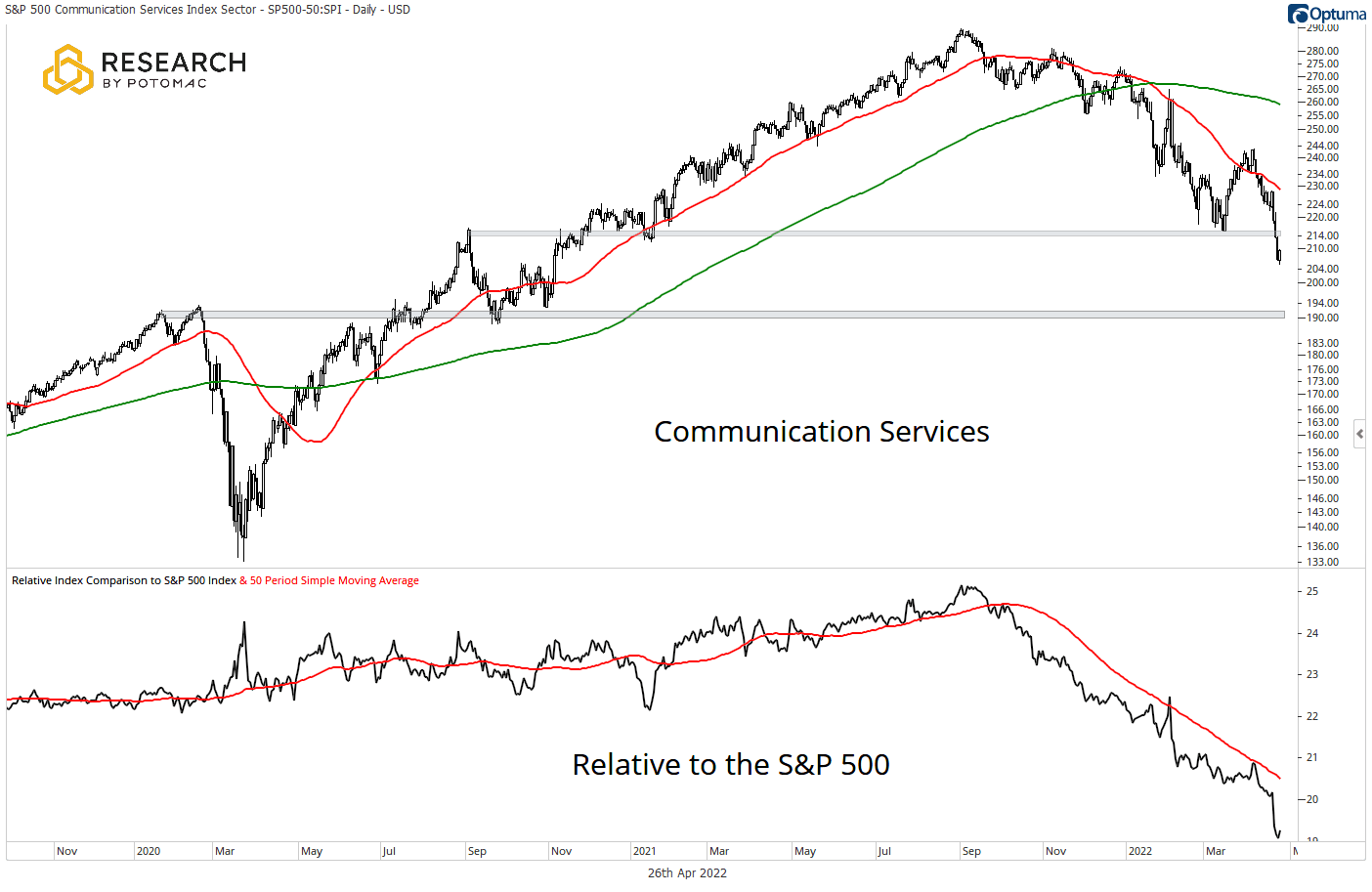
Materials
Materials have moved down to test the moving averages after establishing resistance near the 570 level. The trend is neutral as the battle for control raged between bulls and bears. Yesterday’s reversal to close near the high of the day can be considered an advantage for the bulls.
Relative to the S&P 500
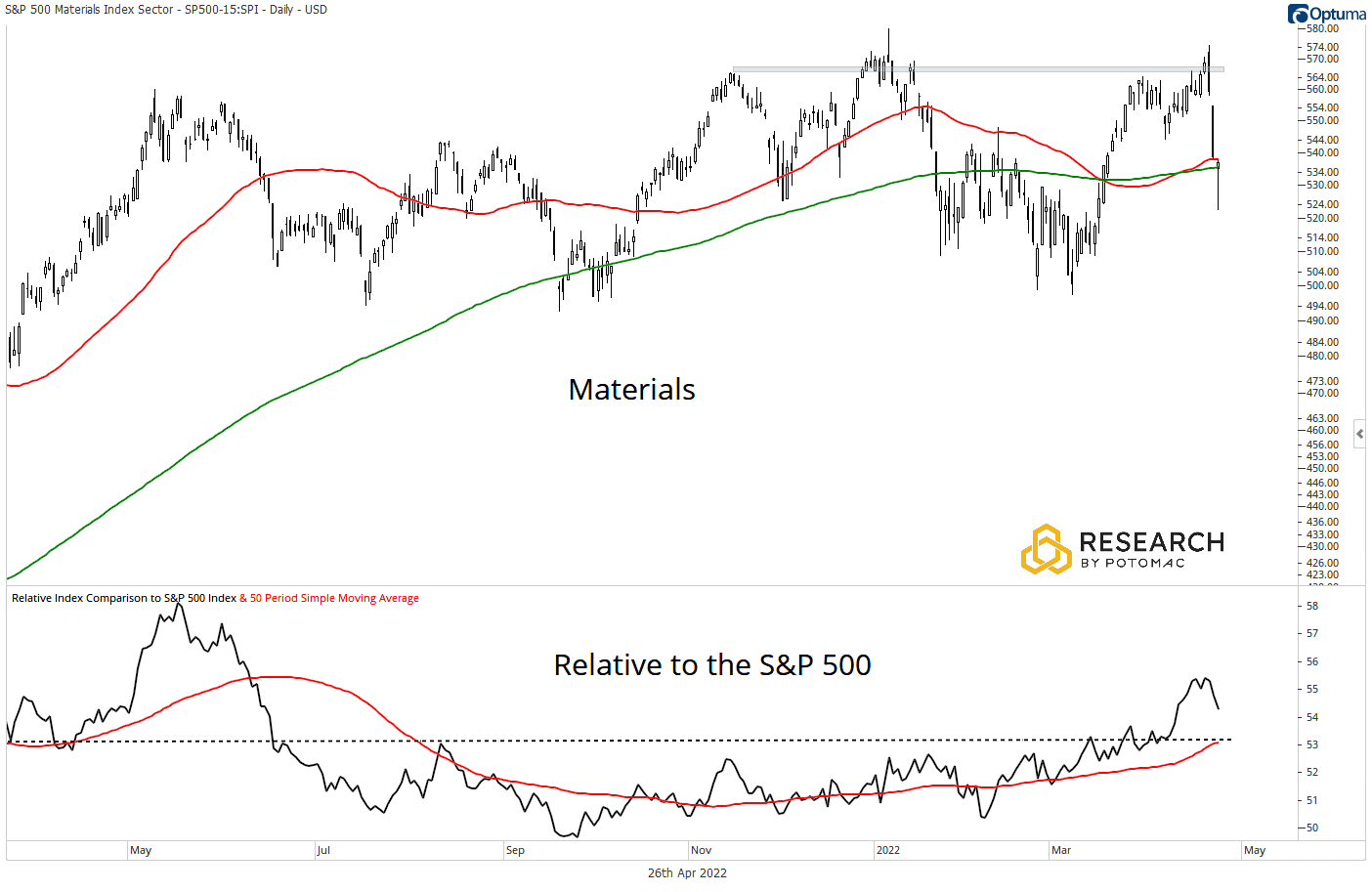
Financials
Financials remain in a consolidation zone, above the 580 level but below the 2021 highs. The index is holding also below the 50 and the 200-day moving averages. The trend remains solidly neutral, but yesterday’s reversal shows us that the bulls are continuing to fight hard.
Relative to the S&P 500
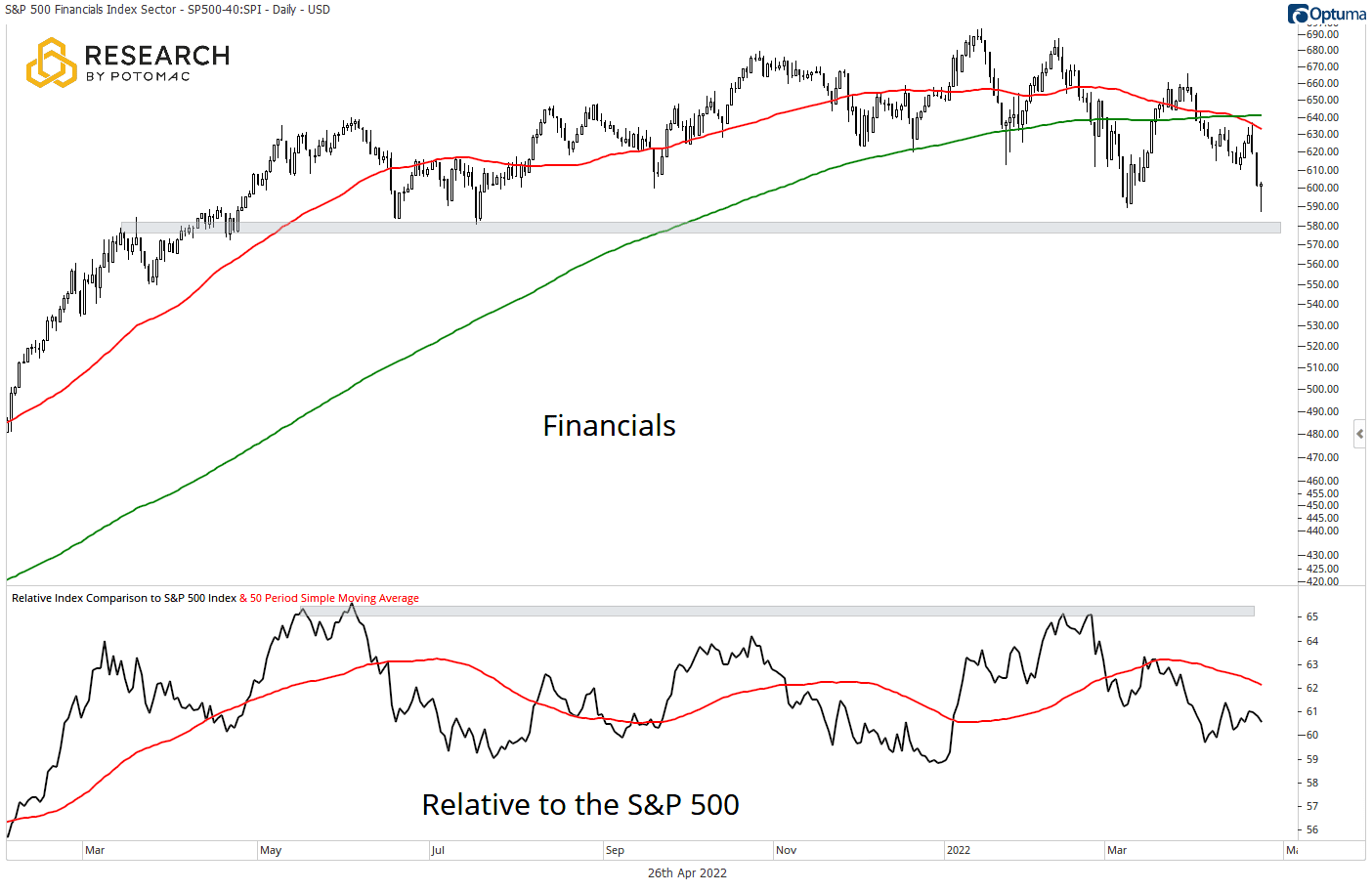
Industrials
Industrials remain in a neutral position, stuck in consolidation, above support but below the 50 and 200-day moving averages. Yesterday’s reversal from early weakness points to the bulls continuing to fight, but the bears retain the edge until the moving averages are breached to the upside.
Relative to the S&P 500
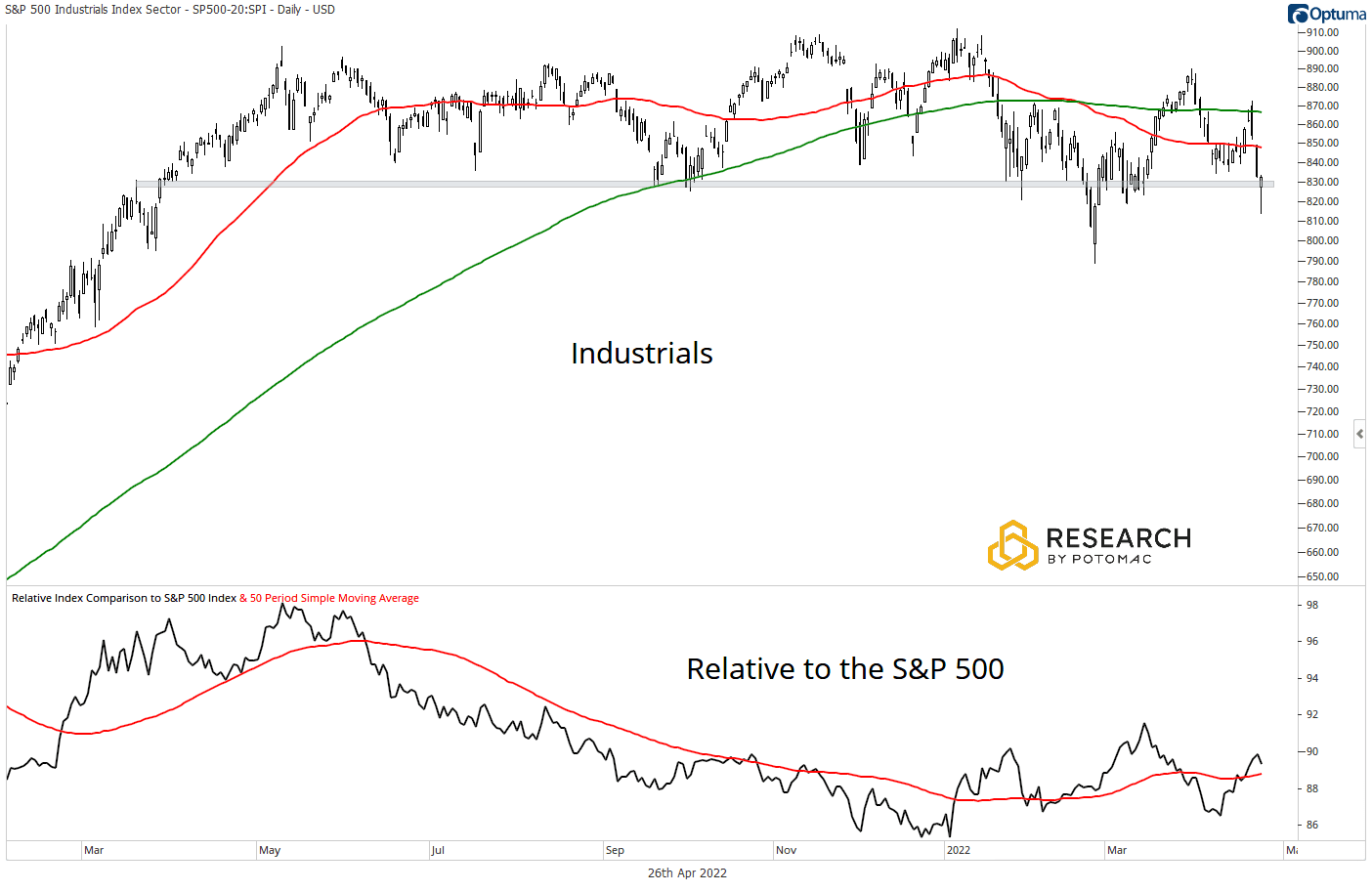
Energy
In a swift three-day decline, the Energy sector has lost the first support zone and the 50-day moving average. The next key level for the uptrend is 530. Should that give way, the 200-day moving average will be in play.
Relative to the S&P 500
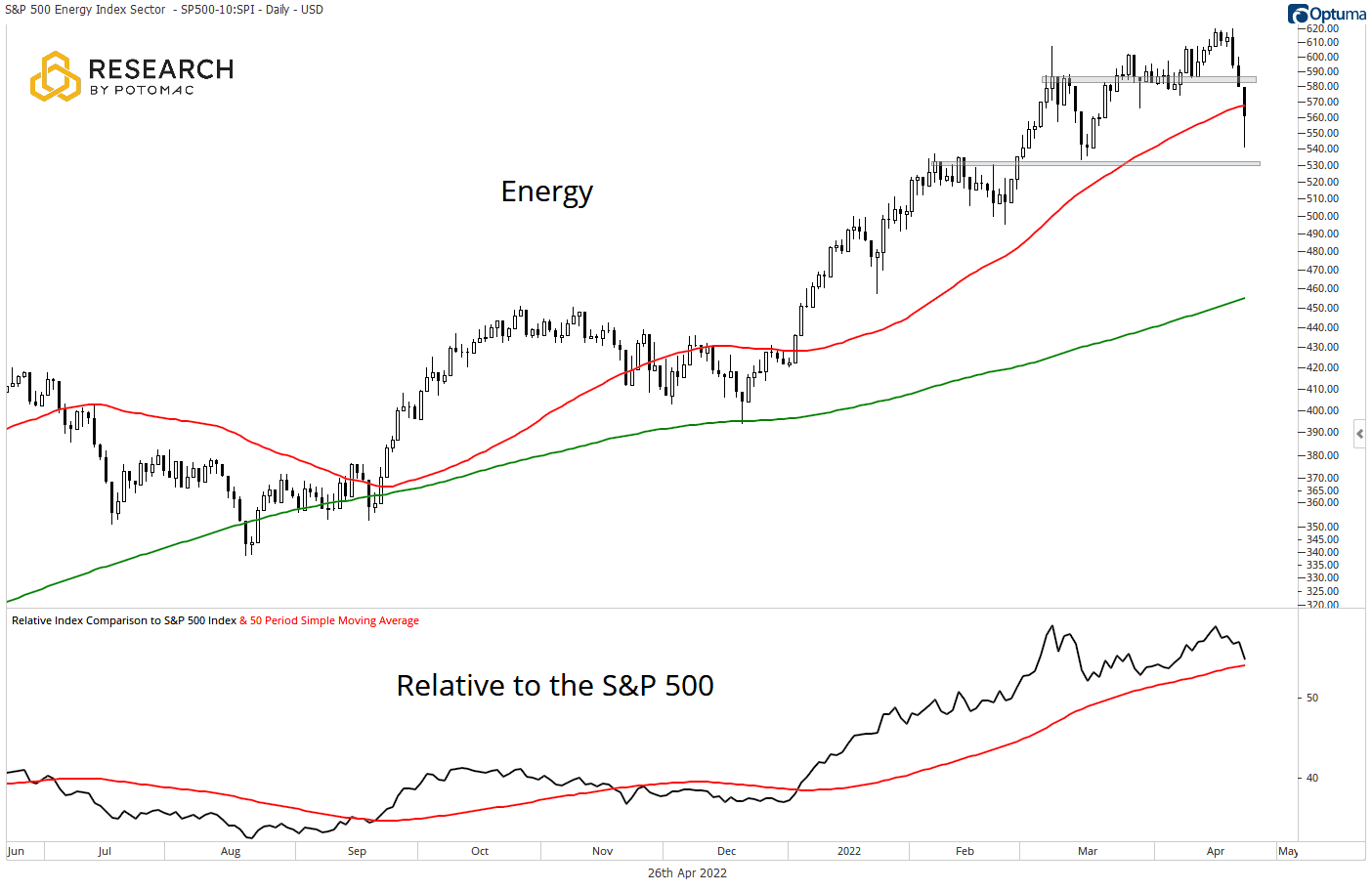
Consumer Staples
Staples are holding above the 810-support level and the rising 50 and 200-day moving averages. Yesterday’s reversal close near the top of the range is a signal that the bulls are not ready to give up control of the trend.
Relative to the S&P 500
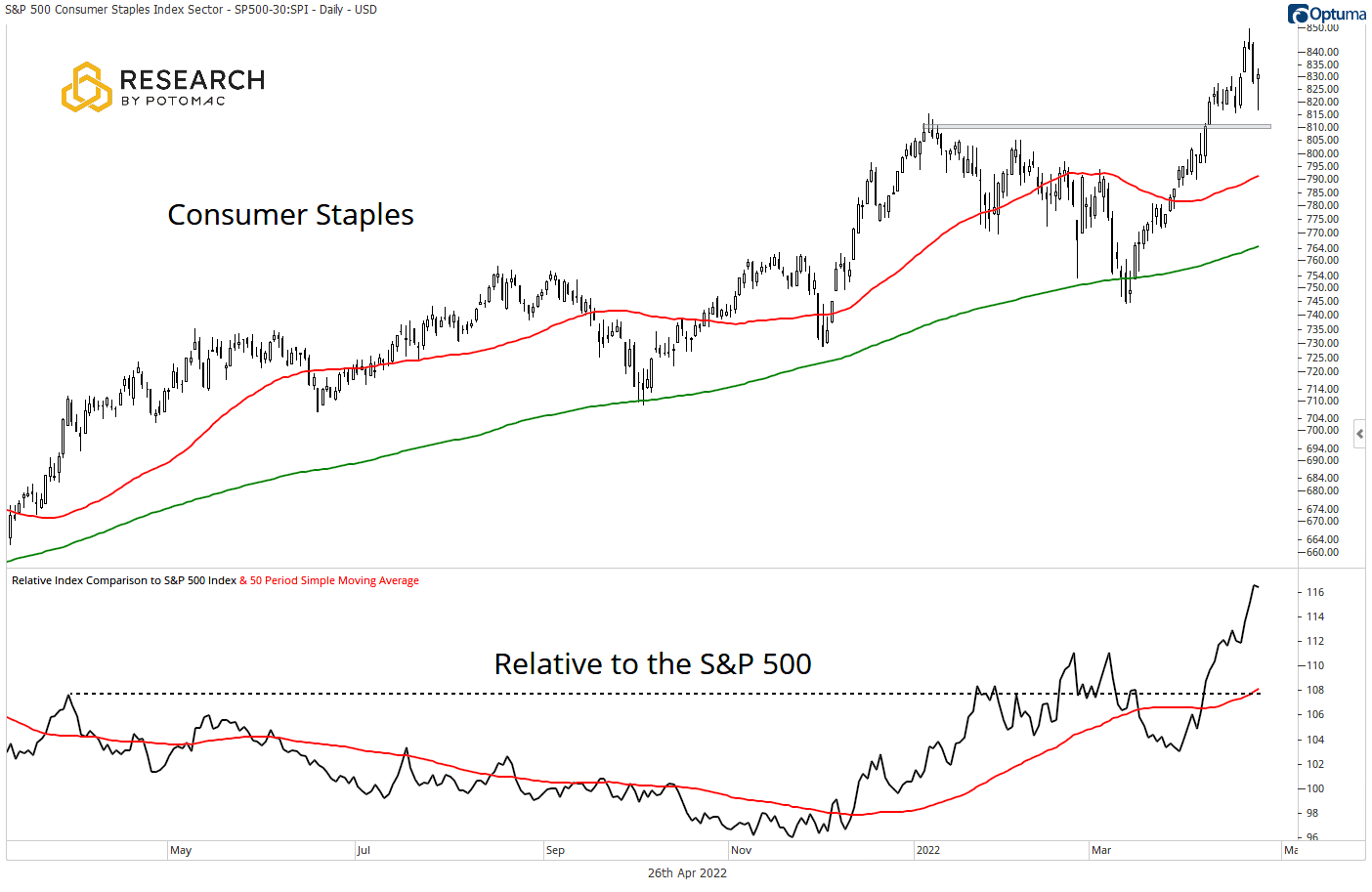
Utilities
Utilities were not immune to last week’s selling pressure, and the index has pulled back toward price-based support and the 50-day moving average. Both key levels are above the rising 200-day moving average, keeping the trend bullish but under pressure.
Relative to the S&P 500
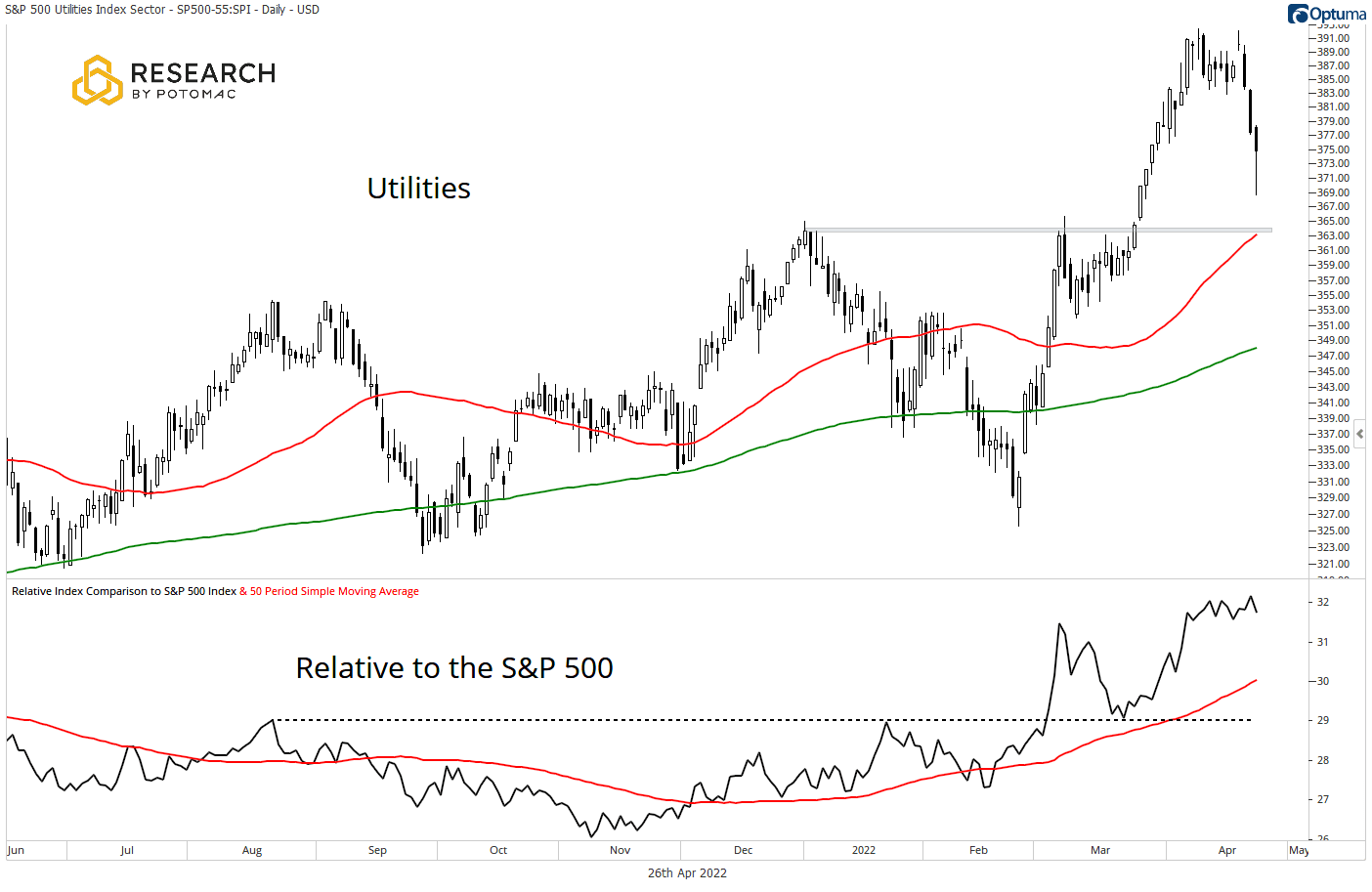
Health Care
Health Care has given up the breakout level for the second time since December and has pulled back to the test the moving averages. The trend moves to a neutral position, awaiting a clearer direction.
Relative to the S&P 500
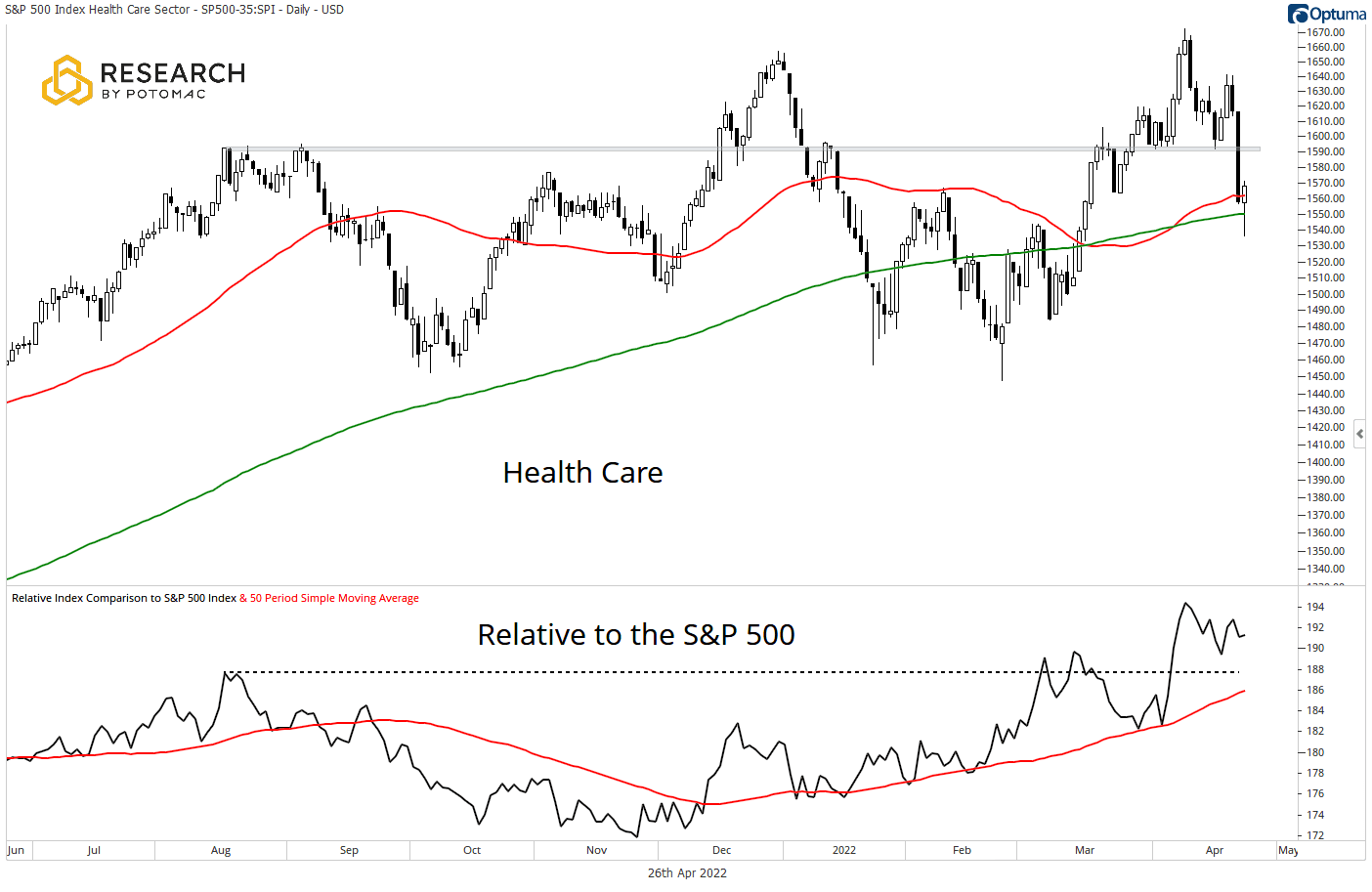
Real Estate
Real Estate pulled back to support at 300 before the bulls stepped in to defend that key level. The index is above the 50 and 200-day moving averages, keeping the bulls in control of the trend.
Relative to the S&P 500
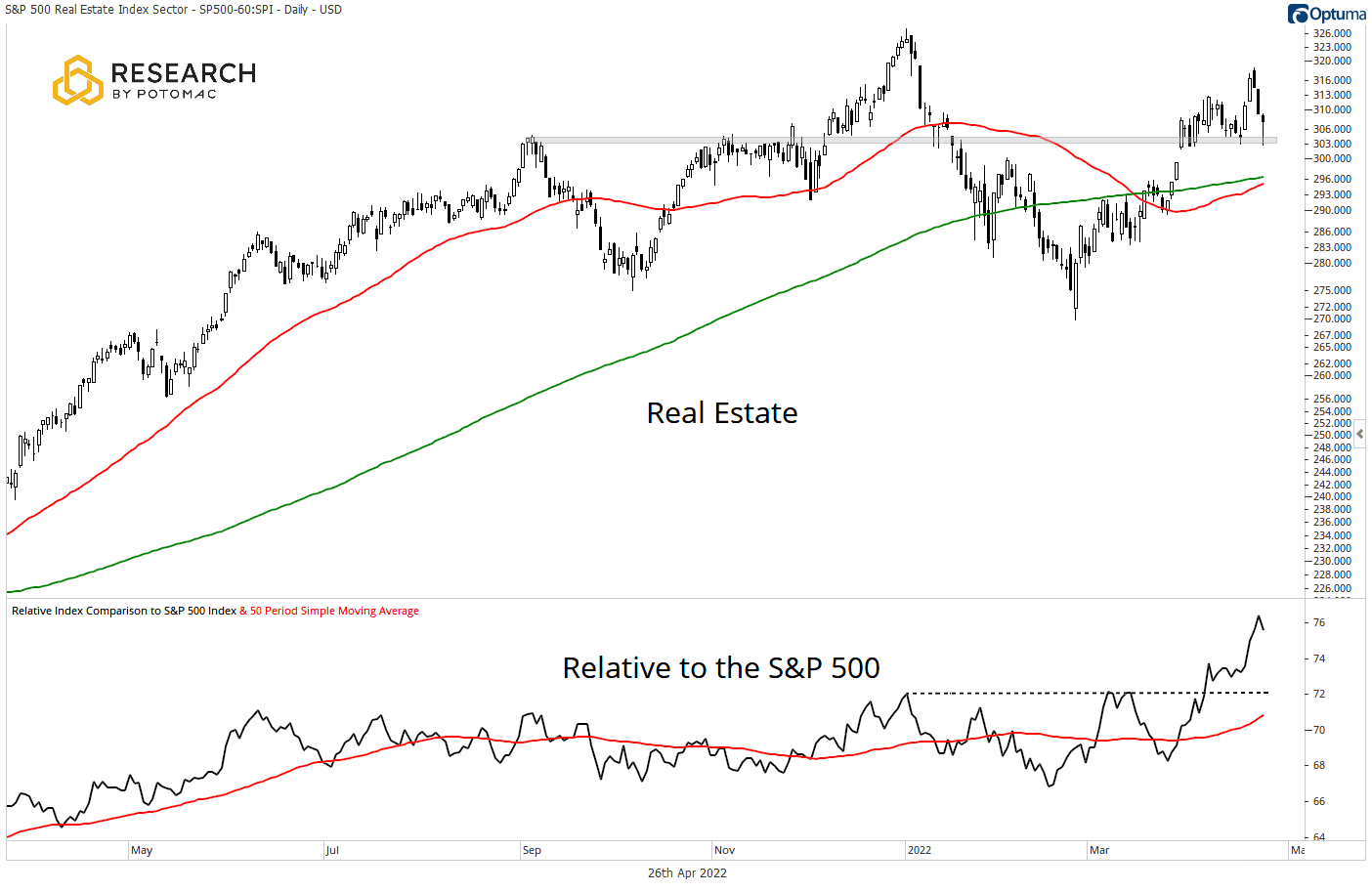
Take-Aways:
Disclosure: This information is prepared for general information only and should not be considered as individual investment advice nor as a solicitation to buy or offer to sell any securities. This material does not constitute any representation as to the suitability or appropriateness of any investment advisory program or security. Please visit our FULL DISCLOSURE page.
